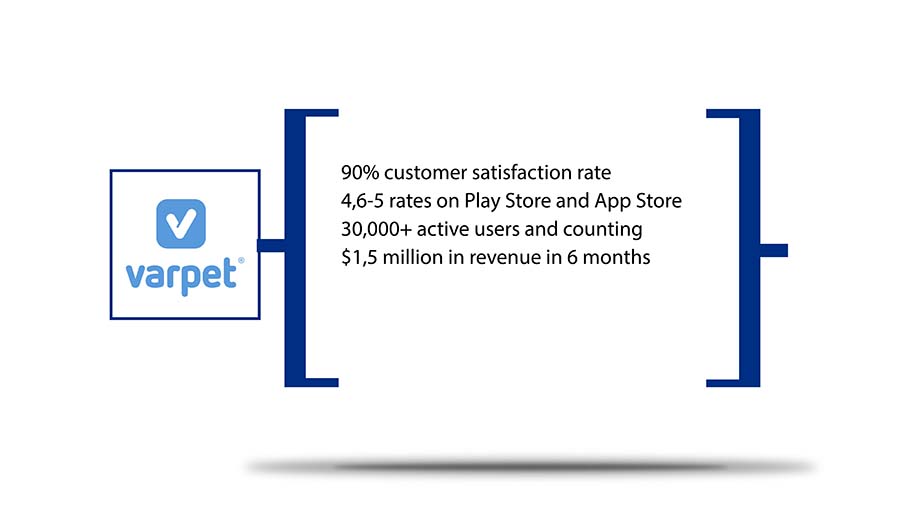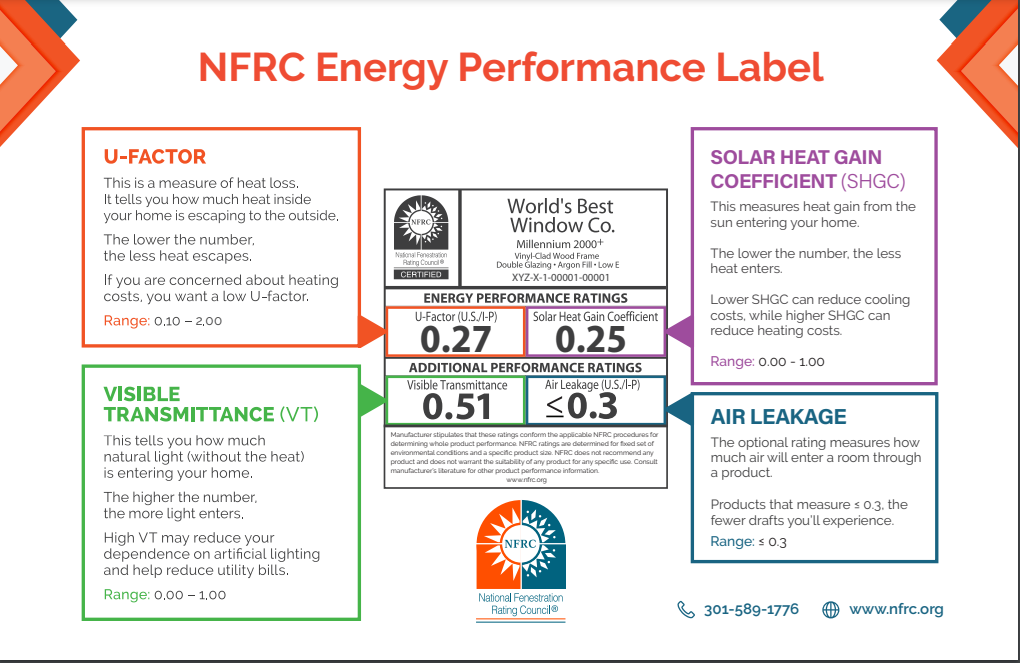Deploying and maintaining a booking application in the cloud presents a unique set of challenges and opportunities. This process encompasses careful consideration of cloud providers, architectural design, deployment strategies, security measures, and ongoing maintenance. From selecting the optimal cloud platform (AWS, Azure, or GCP) and designing a scalable architecture using microservices and containerization, to implementing robust security protocols and continuous monitoring, each stage requires meticulous planning and execution.
This comprehensive guide explores these key aspects, offering practical advice and best practices for building a reliable and efficient cloud-based booking system.
The success of such an application hinges on a well-defined architecture that balances scalability, resilience, and cost-effectiveness. Choosing the right database (relational or NoSQL) is crucial, as is implementing a robust CI/CD pipeline for seamless deployments. Security considerations, including authentication, authorization, and data encryption, are paramount. Finally, continuous monitoring and proactive maintenance are essential for ensuring optimal performance and minimizing downtime.
Choosing a Cloud Provider
Selecting the right cloud provider for your booking application is a crucial decision impacting scalability, performance, cost, and overall success. The major players – AWS, Azure, and Google Cloud Platform (GCP) – each offer compelling features, but their strengths and weaknesses vary significantly, influencing the best choice for your specific needs.
Comparison of AWS, Azure, and GCP for Booking Applications
Each provider offers a comprehensive suite of services suitable for building and deploying a booking application. However, their strengths lie in different areas. AWS boasts the most mature and extensive ecosystem, offering a vast array of services and a large community. Azure integrates well with Microsoft technologies, making it a natural choice for businesses already invested in the Microsoft stack.
GCP excels in its data analytics capabilities and its strong machine learning offerings, which could be beneficial for advanced features like predictive pricing or personalized recommendations within a booking application. Weaknesses include vendor lock-in with any provider, requiring careful planning for future migration if needed. AWS can be complex for beginners due to its sheer scale, while Azure’s pricing model can sometimes be less transparent than others.
GCP, while powerful, might have a smaller community support base compared to AWS, potentially making troubleshooting more challenging in certain situations.
Cost Implications of Each Provider, Deploying and maintaining a booking application in the cloud
Cloud costs are multifaceted, encompassing compute (virtual machines, serverless functions), storage (databases, object storage), and networking (data transfer, load balancing). AWS’s pricing is generally considered granular and potentially complex, requiring careful monitoring and optimization. Azure offers a range of pricing models, including pay-as-you-go and reserved instances, allowing for cost control through strategic planning. GCP’s pricing is often competitive, especially for sustained usage, but understanding its pricing structure is essential to avoid unexpected bills.
Deploying and maintaining a cloud-based booking application requires careful planning and execution. Scalability is key, especially considering the potential for integration with other systems, such as those related to smart home technology integration for stylish interior design , which could offer users a streamlined booking experience tied to their home automation. Ultimately, robust cloud infrastructure ensures a seamless user journey for the booking application itself.
For example, a booking application heavily reliant on database storage might find GCP’s managed database services cost-effective, while one requiring significant compute power for real-time processing might favor AWS’s robust EC2 offerings. The actual costs will depend on factors like the application’s scale, chosen services, and usage patterns. A small-scale application might only spend a few hundred dollars monthly, while a large-scale enterprise application could easily reach thousands or even tens of thousands.
Cloud deployment and maintenance for a booking application requires careful consideration of scalability and security. For instance, ensuring robust uptime is crucial, much like prioritizing the reliability of smart home security systems that complement interior aesthetics , which also demand dependable performance. Returning to the booking app, regular updates and proactive monitoring are vital for optimal functionality and user experience.
Cost Optimization Strategies
Minimizing cloud expenses is vital for long-term sustainability. Several strategies can significantly reduce costs. First, leverage serverless computing where appropriate. Serverless functions only consume resources when actively processing requests, minimizing idle costs. Second, right-size your instances.
Choosing instances with appropriate CPU, memory, and storage capacity avoids paying for unused resources. Third, utilize spot instances or preemptible VMs for non-critical tasks, offering significant cost savings. Fourth, implement efficient storage solutions. Choose the right storage tier based on access frequency and data lifecycle. Archive infrequently accessed data to cheaper storage options.
Fifth, optimize your database. Regularly review database performance and size to ensure optimal resource utilization. Sixth, monitor and analyze your cloud spending regularly. Utilize cloud provider’s cost management tools to identify areas for improvement. For instance, a company running a booking application on AWS might use AWS Cost Explorer to track spending patterns and identify potential cost-saving opportunities like unused resources or inefficient instance types.
Proactive monitoring and optimization are key to keeping cloud costs under control.
Architectural Design
A robust and scalable architecture is crucial for a successful booking application. This design must account for high traffic periods, ensure data integrity, and facilitate easy maintenance and updates. The chosen architecture should prioritize resilience, allowing the system to gracefully handle failures and maintain availability.The following sections detail a suitable microservices-based architecture leveraging containerization and a discussion of database choices.
Microservices and Containerization
Employing a microservices architecture allows for independent development, deployment, and scaling of individual application components. Each service focuses on a specific business function (e.g., user authentication, booking management, payment processing). This modularity improves maintainability, reduces the impact of failures, and allows for independent scaling of individual services based on demand. Containerization, using technologies like Docker and Kubernetes, further enhances this approach.
Docker packages each microservice and its dependencies into a container, ensuring consistent execution across different environments. Kubernetes orchestrates these containers, managing their deployment, scaling, and networking. This combination promotes efficient resource utilization and simplified deployment processes. For example, during peak booking periods, the booking management microservice can be scaled independently to handle increased requests without affecting other services.
Efficiently deploying and maintaining a booking application in the cloud requires careful planning. Consider factors like scalability and security, but also remember the importance of user experience; a well-designed application can even inspire users to improve their own spaces, perhaps using ideas from resources like best smart home interior design ideas for small apartments to create a relaxing atmosphere after a long day of managing bookings.
Ultimately, successful cloud deployment hinges on a balance of technical prowess and user-centric design.
Database Selection: PostgreSQL vs. MongoDB
Choosing the right database is a critical decision impacting application performance and scalability. Relational databases like PostgreSQL excel in managing structured data with well-defined relationships, while NoSQL databases like MongoDB are better suited for unstructured or semi-structured data and high-volume, high-velocity data ingestion.
| Database Type | Scalability | Use Cases |
|---|---|---|
| PostgreSQL | Vertically and horizontally scalable, though horizontal scaling can be more complex than MongoDB. Requires careful planning for optimal performance. | Managing user accounts with relational data (e.g., user profiles, addresses), booking details with relationships to users and resources, maintaining transactional consistency for financial data. Suitable for applications requiring ACID properties. |
| MongoDB | Highly scalable horizontally, easily adding more nodes to handle increased load. Sharding allows for distributing data across multiple servers. | Storing large volumes of booking data, handling unstructured data like customer reviews or images, managing session data, supporting high-throughput operations. Suitable for applications needing flexibility and high write performance. |
Deployment Strategies: Deploying And Maintaining A Booking Application In The Cloud
Deploying and maintaining a cloud-based booking application requires a robust and reliable strategy. Efficient deployment minimizes downtime and ensures a smooth user experience. This section details effective deployment methods, leveraging Infrastructure as Code (IaC) and Continuous Integration/Continuous Deployment (CI/CD) pipelines.
Infrastructure as Code (IaC) Deployment
Infrastructure as Code (IaC) tools, such as Terraform or CloudFormation, automate the provisioning and management of infrastructure. This approach enhances consistency, reproducibility, and reduces manual errors. By defining infrastructure as code, changes are tracked, versioned, and easily rolled back if necessary. This leads to significant improvements in efficiency and reliability compared to manual processes.
A typical IaC deployment workflow involves defining the desired infrastructure in a configuration file (e.g., Terraform’s .tf files or CloudFormation’s YAML/JSON templates). This file specifies all necessary resources, such as virtual machines, databases, load balancers, and networking components. The IaC tool then uses this configuration to create and manage the infrastructure in the chosen cloud provider. Changes to the infrastructure are made by modifying the configuration file and re-running the IaC tool.
This ensures that the infrastructure always reflects the desired state defined in the code.
For example, a Terraform configuration might define an Amazon EC2 instance, specifying its instance type, operating system, and security group. The tool then automatically creates the instance in AWS. If the configuration is updated to increase the instance size, Terraform will automatically update the existing instance or create a new one, ensuring the infrastructure remains aligned with the code.
Continuous Integration/Continuous Deployment (CI/CD) Pipelines
CI/CD pipelines automate the process of building, testing, and deploying the application. This ensures that new features and bug fixes are delivered quickly and reliably. A typical CI/CD pipeline involves several stages:
The initial stages involve building the application from source code, running automated tests (unit, integration, and end-to-end tests), and packaging the application into a deployable artifact (e.g., a Docker container or a WAR file). Successful completion of these stages triggers the deployment process. This automated approach drastically reduces the time and effort required for releases, allowing for more frequent updates and faster response to user feedback.
Deployment to a staging environment allows for final testing before releasing to production. Once testing is complete, the pipeline automatically deploys the application to the production environment. This automated process minimizes manual intervention and reduces the risk of human error. Monitoring tools are integrated into the pipeline to track the performance of the deployed application and alert developers to any issues.
Zero Downtime Deployments
Ensuring zero downtime during deployments is crucial for maintaining a positive user experience. Several strategies can achieve this:
Blue/Green deployments involve maintaining two identical environments: a blue environment (live) and a green environment (staging). The new version of the application is deployed to the green environment. Once testing is complete, traffic is switched from the blue to the green environment. If any issues arise, traffic can be quickly switched back to the blue environment. This minimizes disruption to users.
Canary deployments gradually roll out the new version to a small subset of users. This allows for monitoring the performance of the new version in a real-world setting before deploying it to the entire user base. If issues are detected, the rollout can be stopped immediately. This strategy minimizes the impact of any potential problems. A/B testing can also be incorporated into canary deployments to compare the performance of different versions of the application.
Other techniques like rolling deployments, where the application is updated incrementally across multiple servers, also help minimize downtime. Careful planning and execution are key to successfully implementing these strategies.
Security Considerations
Securing a cloud-based booking application requires a multi-layered approach encompassing preventative measures, robust monitoring, and a well-defined incident response plan. Failure to address security adequately can lead to significant financial losses, reputational damage, and legal repercussions. This section details key security considerations and mitigation strategies.
Authentication and Authorization
Secure authentication ensures only authorized users can access the application. We can achieve this through multi-factor authentication (MFA), requiring users to provide multiple forms of verification, such as a password and a one-time code from a mobile app. Authorization, on the other hand, controls what actions authenticated users can perform. This is typically implemented using role-based access control (RBAC), assigning users specific roles with predefined permissions.
For example, an administrator might have full access, while a regular user only has permission to view and book appointments. Implementing OAuth 2.0 or OpenID Connect protocols can further enhance security by allowing users to authenticate with existing accounts from other trusted providers.
Data Encryption
Protecting sensitive user data, such as personal information and payment details, is paramount. Data encryption involves converting data into an unreadable format, preventing unauthorized access even if a breach occurs. We should implement encryption both in transit (using HTTPS) and at rest (using encryption at the database level). Strong encryption algorithms, such as AES-256, should be employed.
Regular key rotation further enhances security by limiting the impact of potential key compromises. Consider employing encryption for data stored in cloud storage services as well.
Vulnerability Management and Penetration Testing
Regular security assessments are crucial to identify and address vulnerabilities. This involves conducting vulnerability scans to detect potential weaknesses in the application’s code and infrastructure. Penetration testing, simulating real-world attacks, helps assess the effectiveness of security controls. Addressing identified vulnerabilities promptly through patching and code updates is essential. Employing a Software Composition Analysis (SCA) tool can also help identify and mitigate vulnerabilities within third-party libraries and dependencies.
Deploying and maintaining a cloud-based booking application requires careful consideration of scalability and security. Interestingly, the principles of efficient resource management are mirrored in other fields, such as home design; for instance, consider the careful planning involved in using top smart home interior design software and apps for planning to optimize space. Returning to our booking app, robust monitoring and automated updates are crucial for ensuring seamless user experience and minimizing downtime.
Security Monitoring and Incident Response
A robust security monitoring system is vital for detecting and responding to security incidents effectively. This includes implementing intrusion detection and prevention systems (IDPS), logging all access attempts and system events, and using Security Information and Event Management (SIEM) tools to analyze logs and identify potential threats. A well-defined incident response plan Artikels procedures for handling security breaches, including steps for containment, eradication, recovery, and post-incident analysis.
Regular security awareness training for staff is also crucial to minimize human error, a frequent cause of security breaches. For example, training might cover phishing awareness, password security, and secure coding practices. This plan should also include communication protocols for informing affected users and regulatory bodies in the event of a data breach.
Infrastructure Security
The underlying cloud infrastructure itself must be secured. This involves configuring firewalls to restrict network access, using virtual private clouds (VPCs) to isolate resources, and implementing access control lists (ACLs) to limit access to specific resources. Regular security patching of the underlying infrastructure is crucial to mitigate vulnerabilities in the operating system and other components. Employing cloud security posture management (CSPM) tools can help monitor the security configuration of cloud resources and identify potential misconfigurations.
Leveraging features like AWS’s Security Hub or Azure Security Center can significantly streamline this process.
Monitoring and Maintenance
Proactive monitoring and maintenance are crucial for ensuring the reliability, performance, and security of your booking application deployed in the cloud. A robust monitoring system allows for early detection of issues, preventing service disruptions and minimizing downtime, ultimately leading to a better user experience and reduced operational costs. Implementing comprehensive logging provides valuable insights into application behavior, aiding in troubleshooting and performance optimization.
Effective monitoring involves collecting, analyzing, and acting upon data related to various aspects of your application’s performance and health. This includes tracking key performance indicators (KPIs), setting up alerts for critical thresholds, and utilizing cloud-based monitoring tools to gain a comprehensive overview of your system’s status.
Key Performance Indicators (KPIs)
Tracking the right KPIs is vital for understanding the health and performance of your booking application. These metrics provide a quantifiable measure of success and help identify areas needing improvement. Regular review and analysis of these KPIs allows for proactive adjustments and optimization.
- Application Uptime: The percentage of time the application is available and operational. A target of 99.9% or higher is generally considered acceptable for many applications.
- Average Response Time: The average time it takes for the application to respond to user requests. Slow response times can indicate performance bottlenecks or issues with the database.
- Transaction Success Rate: The percentage of successful booking transactions completed without errors. A low success rate indicates potential problems with the booking process.
- Error Rate: The number of errors encountered by the application per unit of time. High error rates can signify bugs, configuration issues, or resource constraints.
- User Engagement Metrics: Metrics such as the number of bookings made, average booking value, and user session duration can provide valuable insights into user behavior and application effectiveness.
Cloud-Based Monitoring Tool Usage
Cloud providers offer sophisticated monitoring tools that are integrated with their infrastructure. These tools provide real-time visibility into your application’s performance and allow for automated alerts and proactive problem resolution. Effective use of these tools is essential for maintaining a healthy and responsive application.
- CPU Utilization: Monitors the percentage of CPU resources being used by the application. High CPU utilization can indicate resource constraints or inefficient code.
- Memory Usage: Tracks the amount of memory consumed by the application. High memory usage can lead to performance degradation and application crashes.
- Network Latency: Measures the time it takes for data to travel between different components of the application. High latency can impact response times and user experience.
- Error Rates: Tracks the frequency of errors occurring within the application. Analyzing error logs helps pinpoint the root cause of issues.
- Database Performance: Monitors the performance of the database, including query execution times, connection pool usage, and disk I/O. Slow database performance can significantly impact application responsiveness.
Scaling and Performance Optimization
Ensuring a booking application remains responsive and available under varying load is crucial for user satisfaction and business success. Effective scaling and performance optimization strategies are essential to handle peak demand and maintain a positive user experience. This section details strategies for achieving scalability and optimizing application performance.
Cloud deployment and maintenance for a booking application requires careful planning, encompassing scalability and security. Think of it like designing a smart home; you need a cohesive system. For instance, understanding the interplay of different components is crucial, much like learning how to choose smart home devices for a cohesive interior to create a seamless experience.
Similarly, a well-integrated booking app ensures a smooth user journey, requiring ongoing monitoring and updates for optimal performance.
Scalability and performance optimization are intertwined aspects of cloud deployment. Scaling addresses the ability of the application to handle increasing user loads, while performance optimization focuses on minimizing response times and resource consumption at any given load. Both are vital for providing a smooth and efficient user experience, particularly during peak booking periods.
Vertical Scaling
Vertical scaling, also known as scaling up, involves increasing the resources allocated to existing servers. This could include upgrading to processors with more cores, adding more RAM, or increasing storage capacity. While simple to implement, vertical scaling has limitations. There’s a practical limit to how much a single server can be scaled before it becomes a bottleneck. For example, a single, powerful server might handle a moderate load effectively, but its performance could degrade significantly during peak booking periods like holiday seasons.
Migrating to a larger server instance type within the cloud provider’s offerings is a common approach. This approach is suitable for applications with moderate traffic fluctuations and where the cost of larger instances is justifiable.
Horizontal Scaling
Horizontal scaling, or scaling out, involves adding more servers to the application’s infrastructure. This distributes the load across multiple servers, enhancing the application’s capacity to handle increased traffic. This approach offers greater scalability and resilience compared to vertical scaling. For instance, if the application receives a sudden surge in bookings, additional servers can be quickly provisioned to handle the increased load, preventing performance degradation.
Horizontal scaling often involves load balancers to distribute incoming requests evenly across the available servers. Amazon’s Elastic Load Balancing (ELB) and Google Cloud’s Cloud Load Balancing are examples of such services.
Caching Strategies
Caching is a critical technique for performance optimization. It involves storing frequently accessed data in a temporary storage location closer to the user, reducing the need to repeatedly fetch it from the main database or other remote sources. Different caching levels exist, including browser caching, CDN caching, server-side caching (e.g., using Redis or Memcached), and database caching. For example, caching frequently accessed booking information like pricing or availability data can significantly reduce database load and improve response times.
Effective caching strategies should consider cache invalidation mechanisms to ensure data consistency.
Database Optimization
Database optimization involves improving the efficiency of database queries and overall database performance. Techniques include indexing frequently queried columns, optimizing database schema design, and using appropriate database connection pooling. For instance, creating indexes on columns used in `WHERE` clauses of SQL queries can dramatically speed up data retrieval. Regular database performance monitoring and tuning are crucial to identify and address bottlenecks.
Load Testing and Performance Tuning
Load testing involves simulating real-world user traffic to assess the application’s performance under various load conditions. Tools like JMeter and Gatling allow simulating thousands of concurrent users to identify performance bottlenecks. Performance tuning is an iterative process involving analyzing load test results, identifying bottlenecks, and implementing optimizations. For example, if a load test reveals that database queries are slow, database optimization techniques can be applied.
Deploying and maintaining a cloud-based booking application requires careful planning for scalability and security. This parallels the challenges of integrating technology seamlessly into a home, much like the considerations discussed in this article on balancing technology and aesthetics in smart home interior design. Both projects necessitate a focus on user experience and ensuring a smooth, intuitive interface, ultimately impacting the overall success of the system.
Continuous monitoring of key performance indicators (KPIs) such as response times, error rates, and resource utilization provides ongoing insights for performance tuning. A common example of a performance tuning cycle involves running a load test, identifying a slow database query, optimizing the query using indexing, and then re-running the load test to verify the improvement.
Disaster Recovery and Business Continuity
Ensuring the continued operation of our booking application is paramount. A robust disaster recovery plan and high availability architecture are critical for minimizing downtime and maintaining user trust. This section details the strategies employed to achieve business continuity in the face of unexpected events.A comprehensive disaster recovery plan involves several key components, working together to ensure rapid recovery from various disruptions.
This plan focuses on minimizing data loss, restoring services quickly, and maintaining business operations.
Backup and Restore Procedures
Regular backups of the application’s database and configuration files are essential. We employ a tiered backup strategy, including frequent incremental backups to a local server, daily full backups to a geographically separate cloud storage location, and weekly offsite backups to a secure, physically distinct data center. Restore procedures are rigorously tested regularly using a simulated disaster recovery scenario, ensuring that we can effectively recover the system within our defined recovery time objective (RTO).
This testing includes a complete system restoration from the offsite backups, verifying the functionality and data integrity of the restored system. The recovery point objective (RPO) is set to ensure minimal data loss in the event of a failure.
High Availability Measures
High availability is achieved through several mechanisms. The application is deployed across multiple availability zones within our chosen cloud provider’s infrastructure. This geographical distribution ensures redundancy; if one zone experiences an outage, the application seamlessly continues operating from another zone. Load balancing distributes incoming traffic across multiple instances of the application, preventing overload on any single server. Database replication ensures data redundancy and immediate failover in case of a primary database failure.
We also employ a robust monitoring system to proactively identify and address potential issues before they escalate into major outages. For example, if CPU utilization on a particular server reaches a critical threshold, our system automatically scales up by adding more instances.
Business Continuity Best Practices
Maintaining business continuity requires a proactive approach. This includes regular training for staff on disaster recovery procedures, ensuring everyone understands their roles and responsibilities during an outage. We maintain detailed documentation of all system configurations and recovery procedures, readily accessible to the relevant teams. Communication protocols are established to keep users informed during an outage, minimizing disruption and maintaining trust.
Furthermore, a comprehensive incident response plan Artikels steps to be taken in the event of an unexpected outage, facilitating a coordinated and efficient response. Regular security audits and penetration testing identify vulnerabilities and ensure the application’s resilience against cyberattacks, a significant threat to business continuity. Finally, regular reviews and updates of the disaster recovery plan ensure its continued effectiveness in the face of evolving threats and technological changes.
Cost Management
Managing cloud costs effectively is crucial for the long-term success of any cloud-based application, including our booking application. Uncontrolled spending can quickly erode profits and hinder growth. A proactive and well-defined cost management strategy is therefore essential. This section details the recurring costs, optimization techniques, and tracking methods we’ll employ.
Recurring cloud costs for our booking application will stem from several key areas. These include compute resources (virtual machines or containers), storage (databases, object storage, and backups), networking (data transfer, load balancing), and managed services (databases, message queues, etc.). The specific costs will depend on the chosen cloud provider, the application’s scale, and the chosen services. For example, running larger, more powerful virtual machines will naturally cost more than smaller ones.
Similarly, increased data storage and network transfer will also increase costs.
Recurring Cost Breakdown
A detailed breakdown of recurring costs should be regularly updated, but a sample might include:
| Cost Category | Estimated Monthly Cost (USD) | Notes |
|---|---|---|
| Compute (EC2 instances, or equivalent) | $500 | Based on estimated usage of medium-sized instances. |
| Storage (Databases, S3 buckets) | $100 | Includes relational database and object storage for images and other assets. |
| Networking (Data transfer, Load balancing) | $50 | Dependent on user traffic and data transfer volume. |
| Managed Services (Database service, etc.) | $200 | Costs associated with managed database services and other managed services. |
| Other (Monitoring, security tools) | $50 | Includes costs for monitoring and security tools. |
| Total Estimated Monthly Cost | $800 | This is an estimate and can vary significantly. |
Cloud Spending Optimization
Optimizing cloud spending is a continuous process. We will employ several strategies to minimize unnecessary expenses while maintaining performance and reliability.
Right-sizing instances involves choosing virtual machines with appropriate compute resources (CPU, memory, storage) for the application’s workload. Over-provisioning leads to wasted resources and increased costs. Regularly reviewing instance usage metrics and adjusting instance sizes accordingly is key. For example, if an instance is consistently underutilized, we can downsize it to a smaller, less expensive instance type. Conversely, if an instance is frequently overloaded, we might need to upgrade it to prevent performance degradation.
Leveraging reserved instances (RIs) or similar commitment-based pricing models can offer significant discounts compared to on-demand pricing. This is especially beneficial for consistently running workloads where we can commit to using specific instance types for a certain period. The discount provided depends on the length of the commitment and the instance type. A careful analysis of our usage patterns is necessary to determine the optimal RI strategy.
Cost Tracking and Management
Effective cost tracking and management are essential for maintaining control over cloud spending. We will use a combination of cloud provider’s built-in cost management tools and third-party solutions to monitor costs in real-time and identify potential areas for optimization.
Regularly reviewing cost reports, setting up budget alerts, and using tagging to categorize resources will enable us to quickly identify cost anomalies and understand the cost drivers for our application. This data will inform our optimization strategies and ensure that we stay within our budget. For instance, tagging resources by team or application allows for granular cost allocation and identification of cost-heavy components.
Ending Remarks

Source: addevice.io
Successfully deploying and maintaining a cloud-based booking application requires a holistic approach that considers every stage of the application lifecycle. From the initial choice of cloud provider and architectural design to the implementation of security measures, monitoring strategies, and disaster recovery planning, each element plays a crucial role in the overall success and longevity of the application. By adopting best practices and leveraging the power of cloud technologies, businesses can create a robust, scalable, and cost-effective booking system that meets the needs of their users and ensures business continuity.
FAQ
What are the key differences between using serverless functions versus virtual machines for a booking application?
Serverless functions offer scalability and cost-efficiency for event-driven tasks (like booking confirmations), while virtual machines provide more control and customization for complex, stateful applications. The best choice depends on the application’s specific needs.
How can I ensure data consistency across multiple database instances in a distributed environment?
Employ techniques like database replication (synchronous or asynchronous), distributed transactions, and consistent hashing to maintain data consistency across multiple database instances. Choosing a database with built-in support for these features is also crucial.
What are some common performance bottlenecks in cloud-based booking applications, and how can they be addressed?
Common bottlenecks include slow database queries, inefficient code, network latency, and insufficient caching. Addressing these requires database optimization, code profiling, network optimization, and implementing effective caching strategies.
How do I choose the right size for my cloud instances to balance cost and performance?
Start with smaller instances and scale up as needed based on performance monitoring. Use autoscaling features to automatically adjust instance sizes based on demand. Regularly review resource utilization to identify opportunities for right-sizing.
- Link 12 Video Syur Iptu MIP Twitter Viral Jadi Buruan Warganet! - December 22, 2025
- Madura United vs RANS Nusantara: Update Liga 1, Top Skor, Top Assist, Jadwal Selanjutnya! - December 18, 2025
- AS Roma Vs Cagliari: Rangkuman Pertandingan Liga Italia Pekan ke-23 & Jadwal Pekan ke-24! - December 18, 2025









